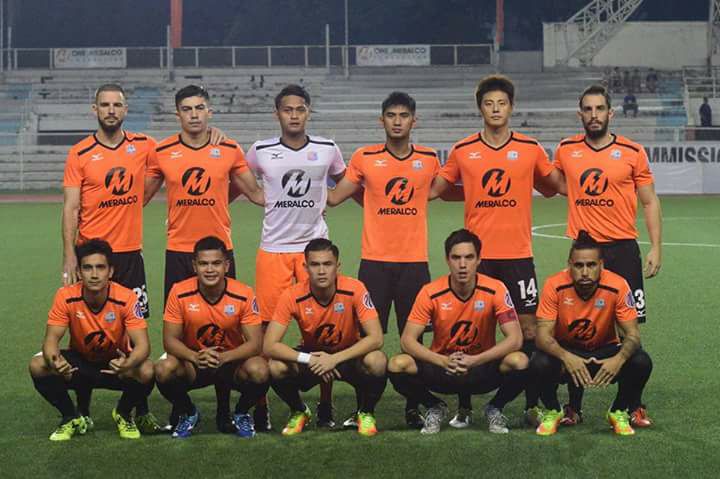Meralco pullout highlights PFL operating cost woes

Photo from FC Meralco Manila Facebook.
Just how sustainable is running a competitive football club in the Philippines?
The question surfaced anew after one of the biggest companies in the country pulled the plug on its football club on Monday night.
From being just six minutes away from playing in the first Philippines Football League finals a few weeks ago, powerhouse FC Meralco Manila announced it was “ceasing operations” after talks with a potential sponsor broke down.
“It is with a heavy heart that we announce that the club will be ceasing operations immediately and will no longer participate in the second season of the Philippines Football League,” the club said in a statement. “Circumstances beyond our control have made it difficult for FC Meralco Manila to continue. The board and management of the Sparks have tried to arrange for new investors that would keep the organization running, but those efforts have sadly fallen short.”
The move came as a shock to the football community considering Meralco has been regarded as one of the bigger clubs in the country, having won the United Football League Cup in 2013 and the PFF National Championship in 2014. It also reached the semifinals of the Singapore Cup in 2012.
Under coach Aris Caslib, they grabbed the No. 1 seed heading into the PFL Finals Series despite the departure of Phil and James Younghusband to the Davao Aguilas in the early part of the season. The Sparks wound up third in the PFL after losing to Global Cebu, 3-2, in the semifinals.
Australian winger Tahj Minniecon, who has played for Meralco since 2014, took to Twitter to express his sadness over the club’s sudden disbandment.
“It’s such a sad way to end my time at Meralco Manila FC,” said Minniecon.
“A sad day for Philippine football. I wish all my teammates and staff members the very best in the next step of their careers.”
A source said operating costs in the PFL may have scared off the company from putting more money into the club.
“I guess the company just wants to focus its resources on basketball,” said a source. “Operating costs went up under the PFL so that may have scared them off.”
On top of players’ salaries and costs of holding home games and traveling for away matches, the clubs also pay an undisclosed franchise fee to the PFL, which sources said is pegged at P5 million a season.
The league is still scrounging for corporate backers heading into its second season even as a salary cap has yet to be implemented for participating clubs.
Ernie Nierras, one of the owners of Stallion Laguna, estimates the cost of running a club can reach at least P1.2 million a month.
“There’s no revenue yet so you can’t expect that money to come back,” he said.
Azkals manager Dan Palami, who gave up ownership of Global Cebu to focus on the national teams, also expressed shock over Meralco’s fate.
“I expected FC Meralco Manila to be one of the more financially and organizationally stable clubs in the country, so their foldup comes as a shock,” he said. “But then again, from a purely business point of view, it’s a prudent decision considering the first season experience of all the clubs.”
Palami added: “The amount of resources that club owners allocate for their operations is staggering; the fans can help by spending money to watch games, buying merchandise, and even offering to be a sponsor. We need to support our clubs before it’s too late.”
